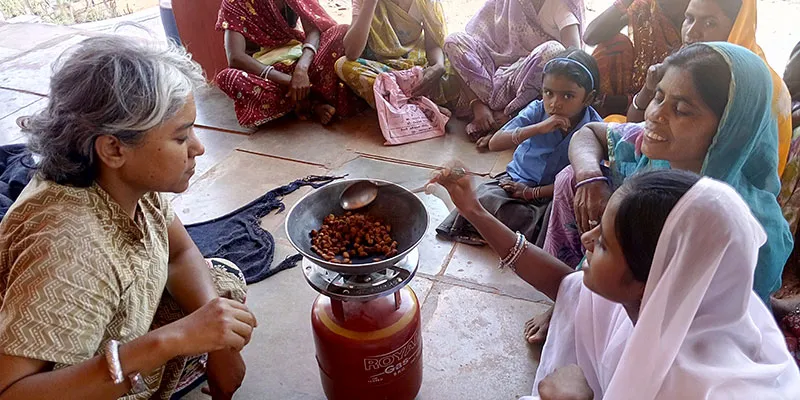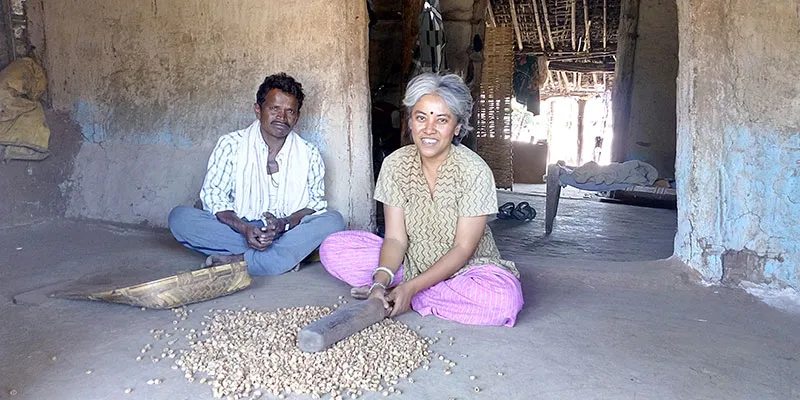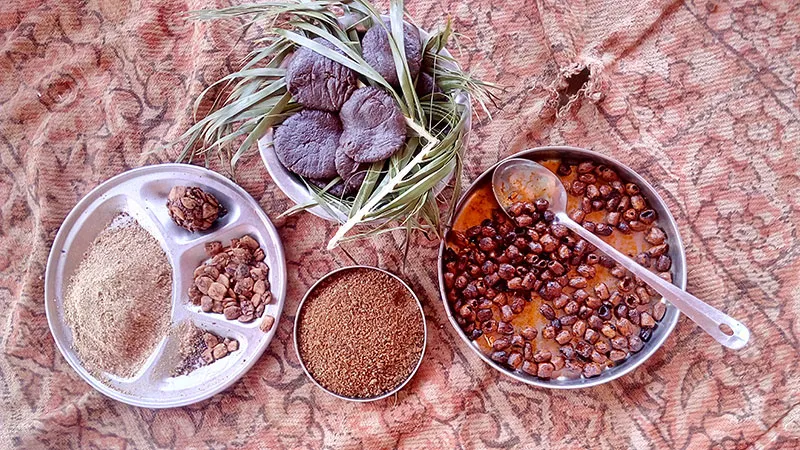A journalist turned wild food advocate is reviving the magic of the Tree of LIfe
All environmentalists are passionate about green issues. And then there are those who are so committed that they turn their lives around 180˚ to live responsibly. Aparna Pallavi worked as a journalist writing on green issues for a Delhi-based magazine, until the dichotomy of her own life began to bother her. So she quit her job and set up a blog about the importance of wild food. Not fully satisfied, she set about planning a food trail that would take her across ten states, staying with farmers and tribal communities to learn more about their Tree of Life, the ‘Mahua’ (Madhuca longifolia). Tribal folklore from Madhya Pradesh to Tamil Nadu is filled with tales of the Mahua, each part of which finds its way into food, medicine, and even alcohol. Scientists are only now waking up to the medical benefits of this tropical deciduous tree.

Aparna says, “I realised that the Mahua produces some of the most crucial forest foods consumed in most parts of India by indigenous people. It is produced in large quantities, and can be cooked in multiple ways. It can be stored and transported, so it is also possible to bring into urban areas round the year, making it important for the indigenous economy.”
But, what makes Aparna’s Mahua yatra unique is that it doesn’t involve any monetary transaction, which may seem an alien concept for us who work day jobs while dreaming of our next big holiday. Her travels are largely funded on the principles of a gift economy. She says, “I am minimally funding my travel costs out of my savings, travelling cheap wherever I can, and I am staying and eating in people’s homes to cut costs. I usually have a suggested minimum fee and I give people the freedom to contribute what they choose. We often tend to forget that gifts are the basis of our survival as a species. This earth and all that it gives – air, water, food, and sunlight, are all gifts.”
Aparna has travelled across Gadchiroli and Melghat in Maharashtra, and in Patalkot, Khandwa and Mandla (buffer zone of Kanha National Park) in Madhya Pradesh as part of this yatra using this gifting principle. Aparna was not keen to get any funding support for her Mahua Yatra as she believes it dichotomises the very principles of green living- “I was not able to get this kind of connection with people when, as a journalist and researcher, I would travel, stay in hotels or drive around in cars provided by an organisation or a funding agency.” By offering help to the people she stays with, Aparna is also able to gauge her whether her work is really relevant to them. As she points out “I would not get the help unless there was something in it for them too”.

In today’s world, where money transactions have become so imperative to our lives, Aparna’s philosophy would resonate with many who find that they end up sacrificing a lot of time and energy doing things they don’t like, simply because they feel that they need the money that the work will bring for them. Think working 300 days a year for that two-week, much-cherished holiday, and what Aparna says makes a lot of sense.
Of course, there is the incentive of learning indigenous recipes and different ways to cook wild food. On the edge of Kanha National Park in Madhya Pradesh, Aparna recalls the dish she made and the collective effort that went into its preparation – “I was living with friends in the buffer zone of the Kanha National Park a few days back. There, I cooked cluster figs – goolar – in three different ways. My friends have small children and eat healthy, so I cooked it with poppy seed paste for them. A neighbouring family, who helped me get the figs told me they like spicy food, so I cooked some for them with a lot of oil, chili powder, and salt. And with a local forest watcher, who had taken me into the forest to study the wild foods available there, I cooked a preparation with a lot of thin gravy, to suit the palates of the employees, and also because we were going to eat rice and needed something that could go with that. In all three contexts, the dish went with the taste of the group, and people talked excitedly about how they would like to eat it more.”

Aparna is keen to take her work beyond just travels and to offer urban people the option of wild food that is tasty and healthy. She gives me the example of Nagpur where she lives; wild greens like tarota (Cassia tora) are available during the monsoon. But the awareness regarding these foods is low, and only a narrow spectrum of foods is available. Aparna is keen to equip urban populations with more creative strategies through which they can access these varied, nutritious, and tasty foods. Already ,thanks to her travels , she can identify at least 10 to 12 wild vegetables growing along the roadside in any city. Aparna hopes to empower communities to create spaces where these wild foods can be nurtured and harvested in a sustainable manner so that they remain available year after year.
While Aparna has come across several NGOs and people’s groups, which are documenting the different forest foods eaten by indigenous people in specific regions like Living Farms in Raigada, Orissa, or BAIF in Maharashtra, her long-term goals is to set up a collective of different kinds of groups working on forest foods, and create a website where the information being collected in different parts of the country on indigenous and forest foods can be brought into one place, and a comprehensive body of information created.
She has drawn inspiration from Jaipur-based Shammi Nanda – a community builder, who teaches conflict resolution skills like non-violent communication in gift culture. Says Pallavi, “I was inspired to travel-in-gift due to his example. He has travelled like that for six years, living on donations and working with people’s support to create a more harmonious society.”
So as Aparna travels round the country sharing her knowledge and love for wild foods, there are many lessons to learn. In her own words, “Travelling through a gift culture is also about sharing love — how much you can give and how much you can receive.”

Aparna’s ‘Mahua Yatra’ will take her to Delhi, West Bengal, Jharkhand, Orissa, Chhattisgarh, Gujarat, Andhra Pradesh and Tamil Nadu. She plans to stay with at least one indigeneous tribe in each state, and also offer rural and urban training workshops. Her last destination before I finished writing this piece, was Udaipur Rajasthan.
Even as I interview her, she keeps going ‘offline’ as she disappears into the forests on her journey to yet another destination on her ‘Mahua Yatra’.
If you wish to know more about the Mahua lady you could follow her journey on her Facebook page ‘Mahua Yatra’.







